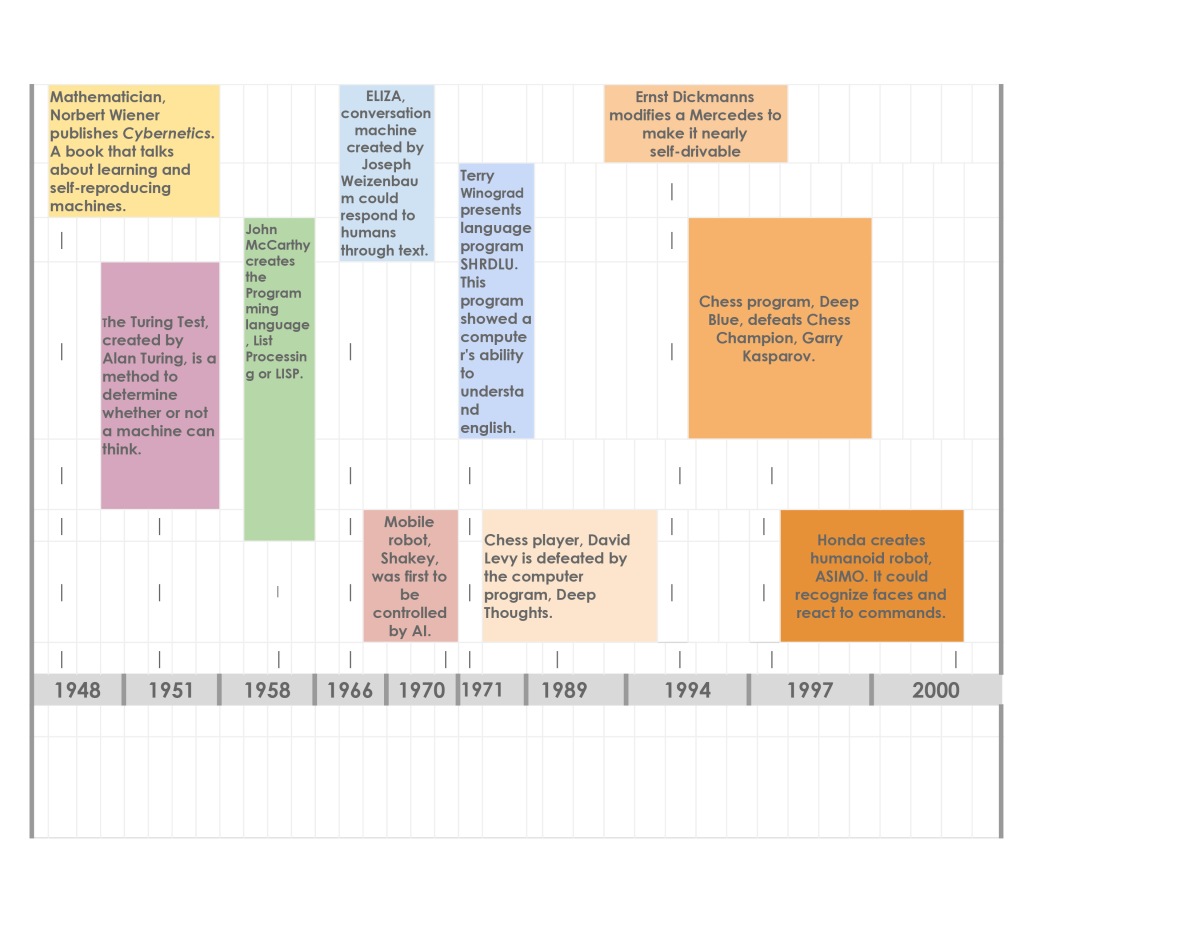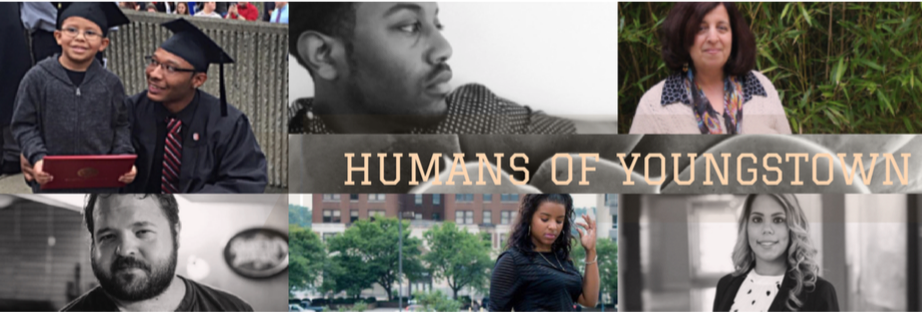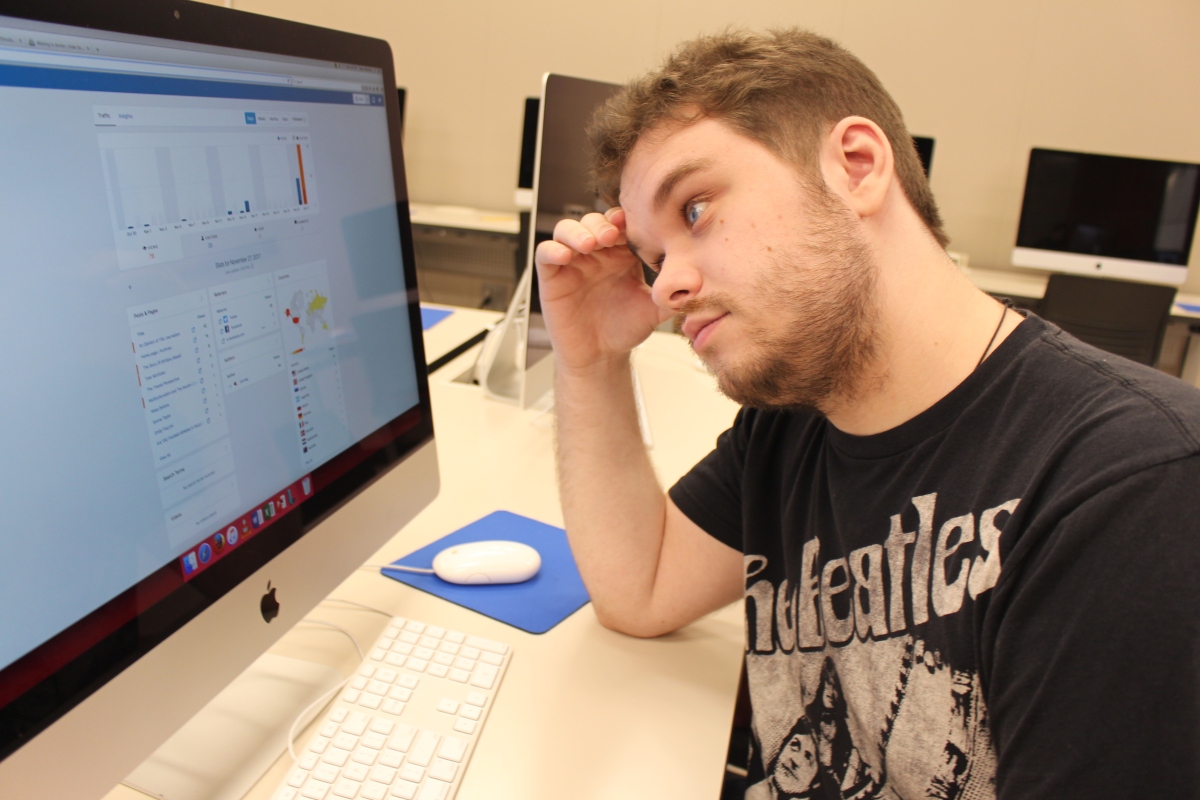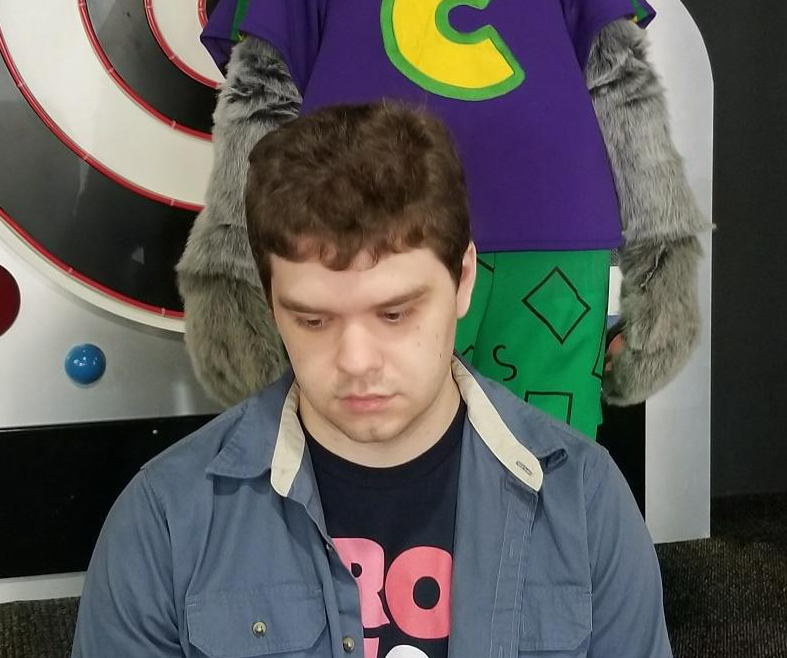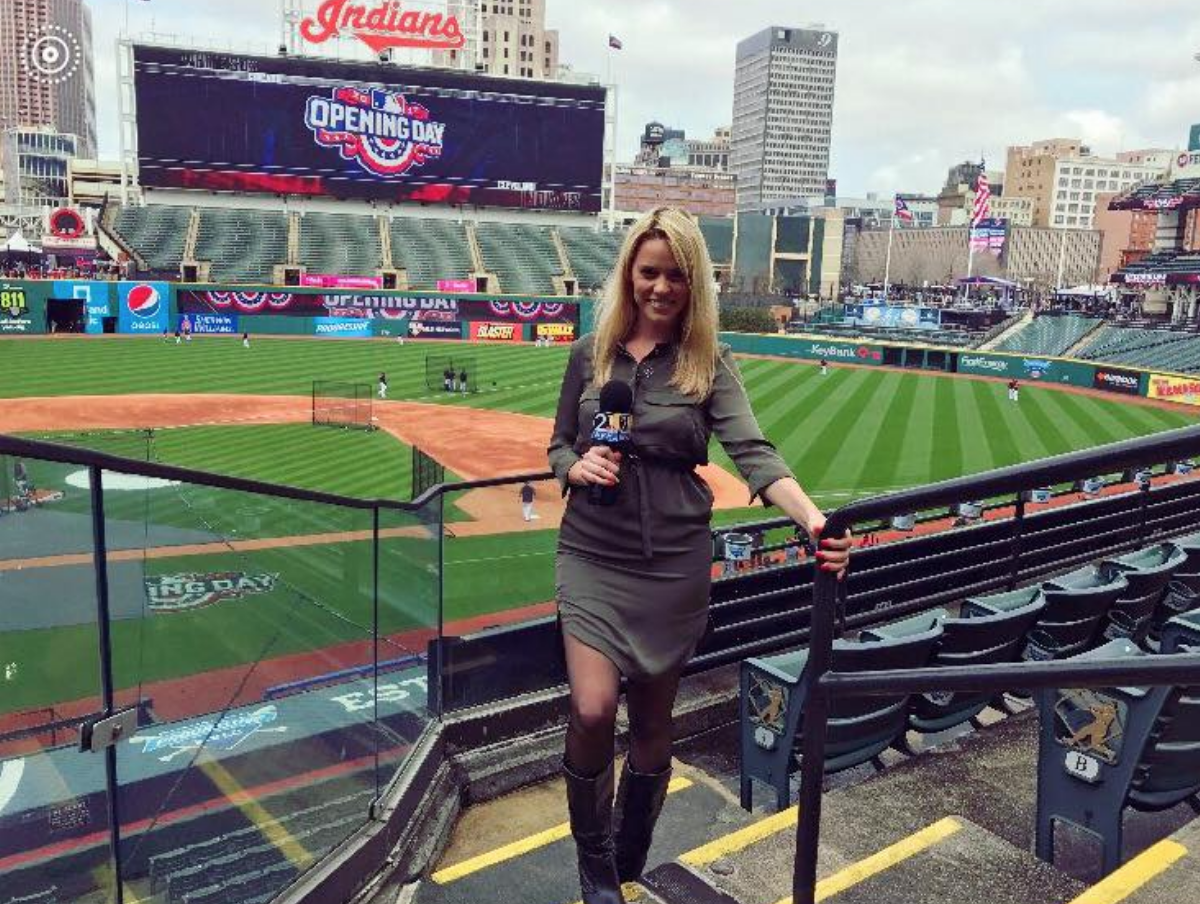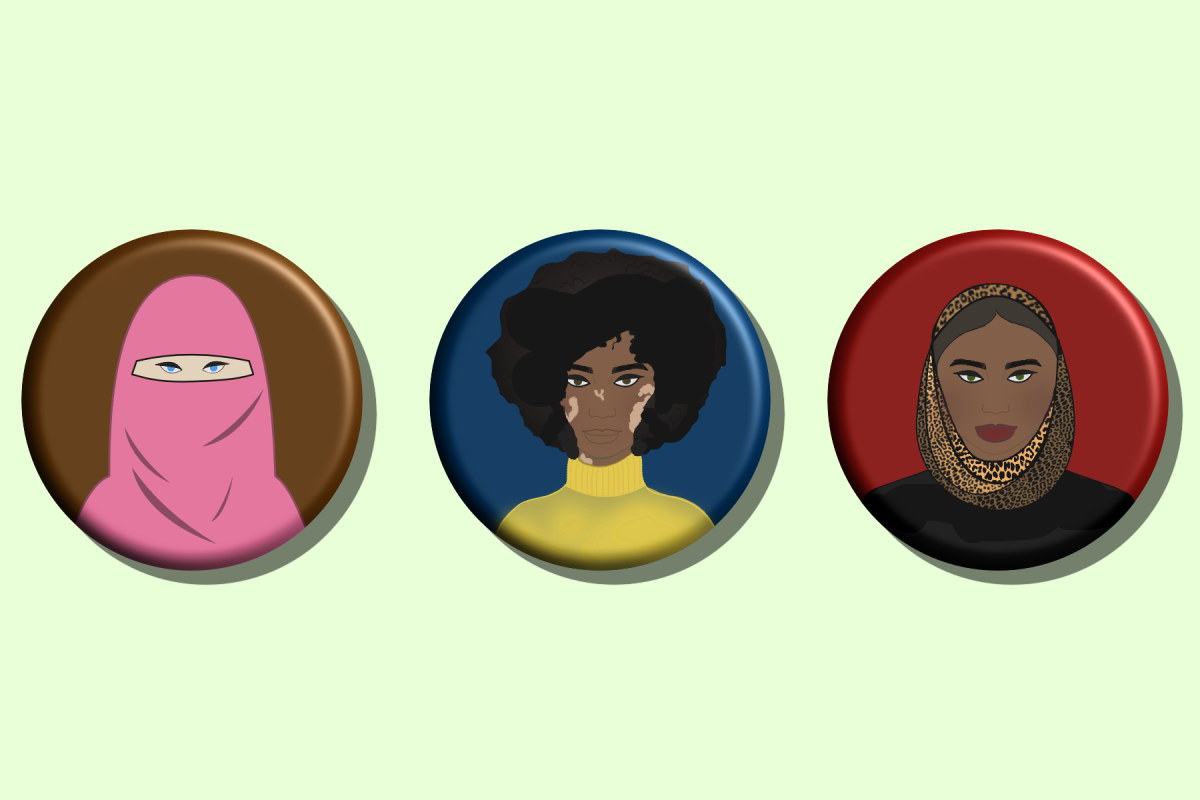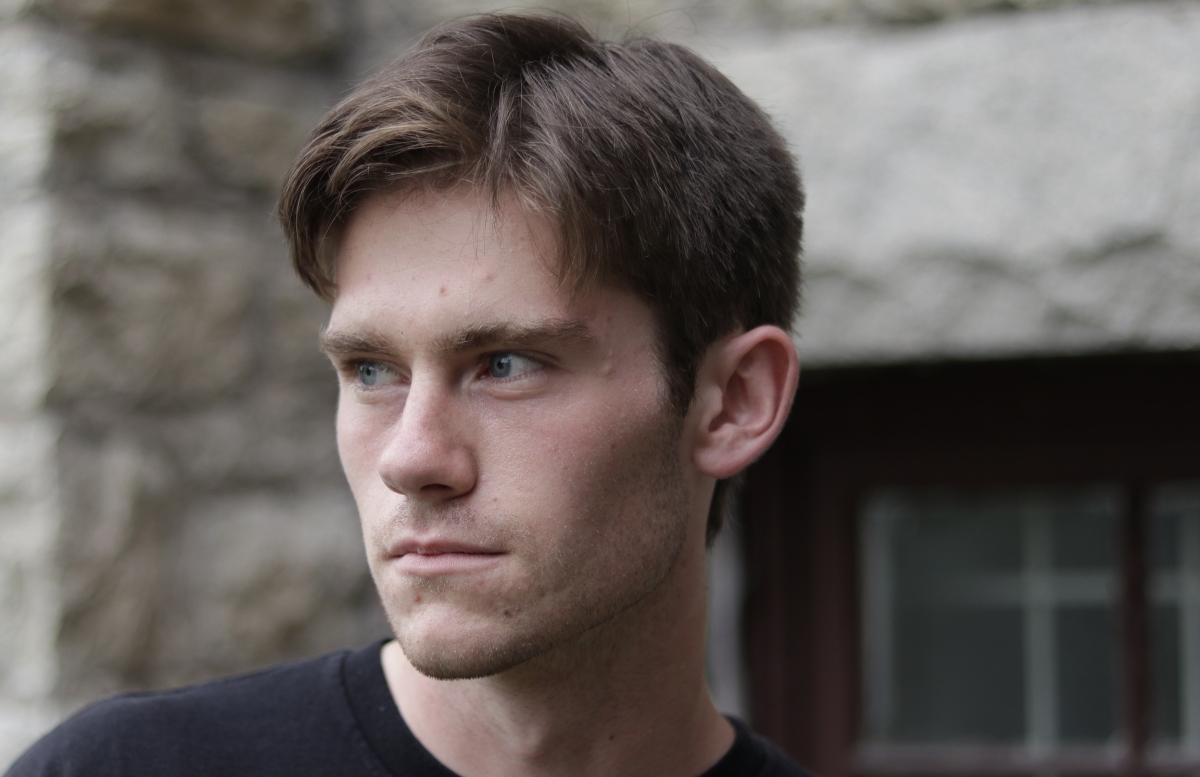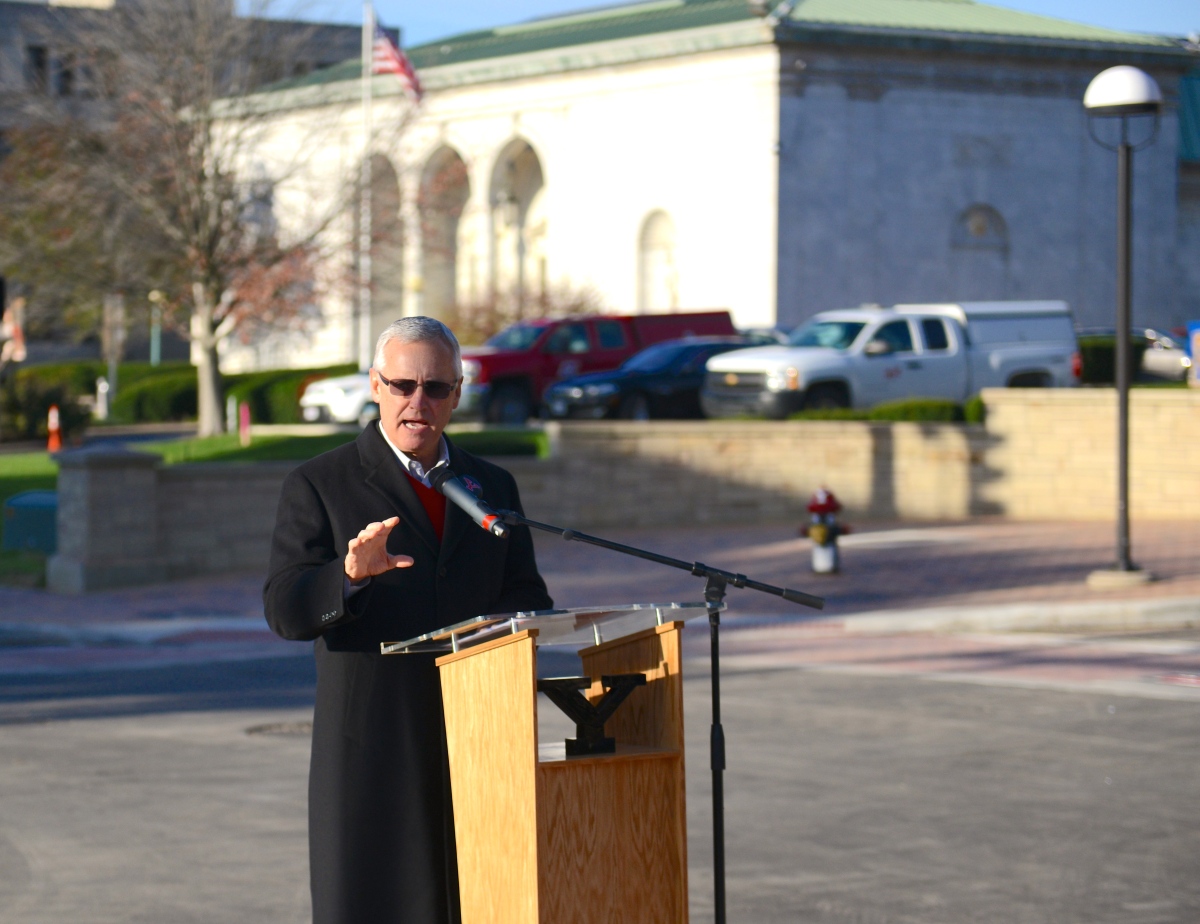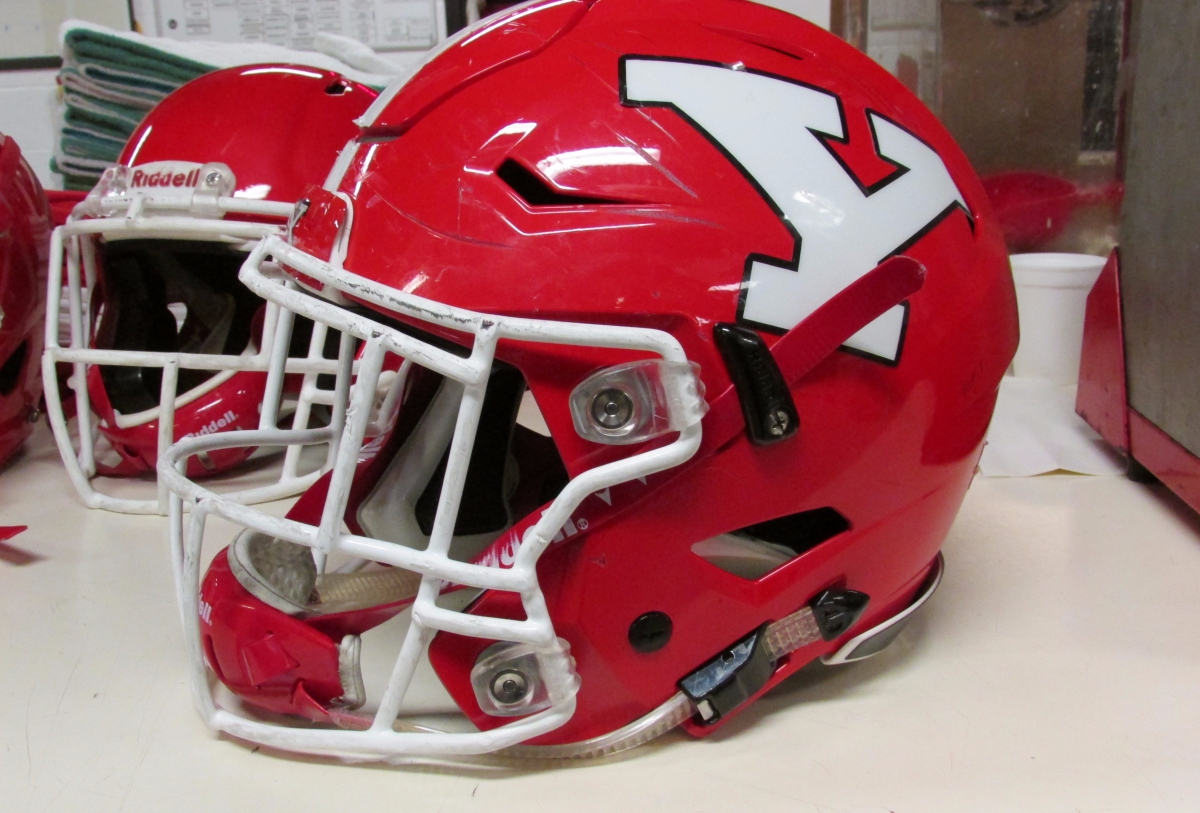Humans of Youngstown
Humans of Youngstown
By Jennifer Rodriguez
YOUNGSTOWN, Ohio: The city of Youngstown is made of interesting, hard- working, talented and motivated human beings. Like any other city, it is the characters of the people who reside in Youngstown making the city what it is. From the growing streets of downtown to the thriving university, all the way to La La Land and the tracks on Southern Boulevard, Youngstown is unique and shines bright with the citizens who have been changed by it, and who have changed it themselves. These are just a few of the humans of Youngstown.
“Only 37 percent of teenage moms earn a high school diploma. Only 1.5 percent of teenage moms earn a four-year college degree. I realized that I was not going to become one of those statistics.”
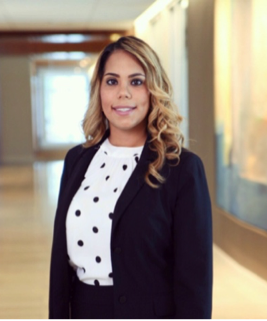 “Being a wife and a mother, and trying to balance my career is challenging at times. I’ve been a mother now for 11 years, a wife for four years… Sometimes it feels like my work is never done. I worked hard in high school to graduate, I worked hard in undergrad to graduate, I worked hard in law school to get a position with the firm I am at, and now that I am here, I have to work hard to build up my practice and make a name for myself within the legal community. I’ve only been an attorney for 2 years now. My daughter remembers how we used to struggle and how we used to live. She remembers the bad neighborhoods, the Section 8 housing, the used and donated items we used to receive. I am glad that she was old enough to see the struggle because now she knows where she came from and she also knows how far hard work can bring you. Although I’ve been in Cleveland for the past five years, Youngstown will always be home. Youngstown raised me. Youngstown is full of stories like mine, with successful men and women who have made something out of themselves regardless of the odds that are against them. Our city is an amazing city, because despite any issues it may have, our city still produces extraordinary men and women. This is because nothing comes easy to you in Youngstown and you have to work hard, grind and earn your own success. That hard work, in turn, creates determination, ambition and strength, which are all ingredients for success.” – Ciera Parish, Corporate Attorney.
“Being a wife and a mother, and trying to balance my career is challenging at times. I’ve been a mother now for 11 years, a wife for four years… Sometimes it feels like my work is never done. I worked hard in high school to graduate, I worked hard in undergrad to graduate, I worked hard in law school to get a position with the firm I am at, and now that I am here, I have to work hard to build up my practice and make a name for myself within the legal community. I’ve only been an attorney for 2 years now. My daughter remembers how we used to struggle and how we used to live. She remembers the bad neighborhoods, the Section 8 housing, the used and donated items we used to receive. I am glad that she was old enough to see the struggle because now she knows where she came from and she also knows how far hard work can bring you. Although I’ve been in Cleveland for the past five years, Youngstown will always be home. Youngstown raised me. Youngstown is full of stories like mine, with successful men and women who have made something out of themselves regardless of the odds that are against them. Our city is an amazing city, because despite any issues it may have, our city still produces extraordinary men and women. This is because nothing comes easy to you in Youngstown and you have to work hard, grind and earn your own success. That hard work, in turn, creates determination, ambition and strength, which are all ingredients for success.” – Ciera Parish, Corporate Attorney.
“I always viewed my relationship with my son completely separate from anything else. Nobody can affect our relationship but us two.”
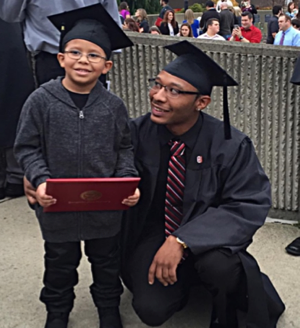 “I grew up on the East Side of Youngstown. Not too many of us had a mom and dad, most people just had their mom. I still struggle with some stuff with my son, trying to get through to him and teach him different things, even teach myself different stuff. I just kind of had to make it up as I went along and do what I felt was right or what I thought was right. With just the basics in my mind. From popping up at his school to be sure he isn’t slacking, to being at every doctor’s appointment, school play and basketball game. Everything that I lacked or that I missed or that I needed, I have to be that and more. We go to the park, we play catch, we just got a basketball hoop so we play basketball now, we talk. A lot of people get swept up in the same things as their environment, because they follow. You do what you know. You follow what your friends are doing. If your friends are committing crimes, you’re going to commit a crime. When I moved out of the projects it was then that I realized there was more to everything, more to life and what I knew. That little bit of exposure, it was enough for me to realize; I love where I come from, what I learned and the people. But, you can love it and not actively participate in it.” – Chris Huntley, Founder of Cuzin’s Lawn Care
“I grew up on the East Side of Youngstown. Not too many of us had a mom and dad, most people just had their mom. I still struggle with some stuff with my son, trying to get through to him and teach him different things, even teach myself different stuff. I just kind of had to make it up as I went along and do what I felt was right or what I thought was right. With just the basics in my mind. From popping up at his school to be sure he isn’t slacking, to being at every doctor’s appointment, school play and basketball game. Everything that I lacked or that I missed or that I needed, I have to be that and more. We go to the park, we play catch, we just got a basketball hoop so we play basketball now, we talk. A lot of people get swept up in the same things as their environment, because they follow. You do what you know. You follow what your friends are doing. If your friends are committing crimes, you’re going to commit a crime. When I moved out of the projects it was then that I realized there was more to everything, more to life and what I knew. That little bit of exposure, it was enough for me to realize; I love where I come from, what I learned and the people. But, you can love it and not actively participate in it.” – Chris Huntley, Founder of Cuzin’s Lawn Care
“I wanted to do something that would allow me to travel with a purpose.”
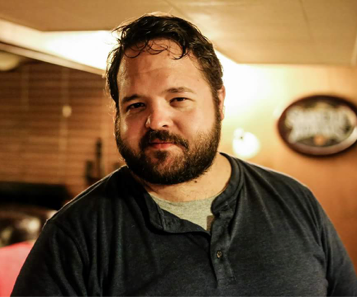
“I always knew that I wanted to travel. Growing up I watched Star Wars and Indiana Jones, there was a lot of adventure and a lot of travel and I was like ‘I want to do that.’ When I was younger my dad worked in Cleveland so I would frequently go up to Cleveland with my dad and travel around a little bit with him… I learned from an early age that there was a lot of cool stuff outside of my home, which made me want to see more of it… When I was 16 I took a trip with the church I was at to Tijuana. That really opened my eyes a lot because it wasn’t just traveling outside of Youngstown to like New York or something, it was traveling to a different country. I saw a lot of poverty while I was there but I also saw a completely different culture, which I really fell in love with… A lot of times I don’t really plan this stuff out, it’s just sort of opportunities, every trip that I’ve gone on has been an opportunity that I’ve said yes to. I’ve been to Canada and Mexico, Sri Lanka, Dubai, the Maldives and Ireland. I’ve been all over the states. I am a writer that values the truth and values justice, that has a very bad case of wanderlust and I don’t think that wandering or aimlessness are bad words.” – Graig Graziosi, Reporter for The Vindicator
“I am a radio host aspiring to be a sportscaster and traveling evangelist”
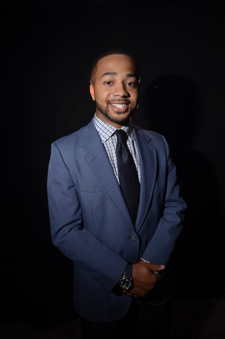 “I grew up in church, I’m a PK (pastor’s kid), my grandfather was a pastor so that was kind of the thing I knew eventually was going to happen. I honestly thought going to church was boring growing up… but as you get a little older you start to really figure out this wasn’t really a bad thing. When I was about 18 is when I really started to get more involved. I plan to continue doing ministry but not necessarily as a pastor. One of things I’ve learned is you can reach more people by treating them right than ever trying to tell them about their “sin.” I believe God places people in different positions… One of the things I’ve learned is to reach people doing the things I do, as far as either preaching in the city or having a radio show broadcasted all around the world or having open gyms in the community, and just talking to people and asking how they are and showing them who God is in the way you treat them.” – Chris Gunther, YSU Telecommunications Student
“I grew up in church, I’m a PK (pastor’s kid), my grandfather was a pastor so that was kind of the thing I knew eventually was going to happen. I honestly thought going to church was boring growing up… but as you get a little older you start to really figure out this wasn’t really a bad thing. When I was about 18 is when I really started to get more involved. I plan to continue doing ministry but not necessarily as a pastor. One of things I’ve learned is you can reach more people by treating them right than ever trying to tell them about their “sin.” I believe God places people in different positions… One of the things I’ve learned is to reach people doing the things I do, as far as either preaching in the city or having a radio show broadcasted all around the world or having open gyms in the community, and just talking to people and asking how they are and showing them who God is in the way you treat them.” – Chris Gunther, YSU Telecommunications Student
“I want to be someone that you remember, someone you remember in the city that made a statement and said, hey I’m here too.”
 “Me and my family moved to Youngstown when I was about five or six. We moved to the Eastside of Youngstown and I was basically raised on the Southside. I tried to go to college, I went to the University of Akron for respiratory therapy. I took that up for a while and then I actually went through a hardship with my mother passing away. So I ended up not necessarily dropping out of school, but I came back home. Then, I started going to YSU in 2012 for the same thing, but the program only takes like 25 people a semester and because of my mother passing away, my financial aid was all a big mess I was like ‘I’m done,’ and that’s when I started taking up modeling. To be honest, me taking pictures kind of reminds me of my mom. When I was little she always used to have me pose and do little things like that, so that’s kind of inspiring to why I got into modeling. I fell in love with hosting, because I wanted to model. I wanted to take pictures and be creative, I wanted to be hip-hopish, I wanted to be urban. I just want to be versatile. I want each avenue. I want to be an event coordinator, I want to throw parties, I want to host, I want to do everything. I’m eager to change the way people look at the entertainment industry locally, I want people to really embrace it. I am someone who’s local and trying to make it.” – Lisette Encarnacion, Host and Model
“Me and my family moved to Youngstown when I was about five or six. We moved to the Eastside of Youngstown and I was basically raised on the Southside. I tried to go to college, I went to the University of Akron for respiratory therapy. I took that up for a while and then I actually went through a hardship with my mother passing away. So I ended up not necessarily dropping out of school, but I came back home. Then, I started going to YSU in 2012 for the same thing, but the program only takes like 25 people a semester and because of my mother passing away, my financial aid was all a big mess I was like ‘I’m done,’ and that’s when I started taking up modeling. To be honest, me taking pictures kind of reminds me of my mom. When I was little she always used to have me pose and do little things like that, so that’s kind of inspiring to why I got into modeling. I fell in love with hosting, because I wanted to model. I wanted to take pictures and be creative, I wanted to be hip-hopish, I wanted to be urban. I just want to be versatile. I want each avenue. I want to be an event coordinator, I want to throw parties, I want to host, I want to do everything. I’m eager to change the way people look at the entertainment industry locally, I want people to really embrace it. I am someone who’s local and trying to make it.” – Lisette Encarnacion, Host and Model
“A lot of people say hurt people hurt people, but I think hurt people can help people.”
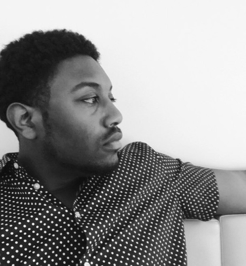
“I lived in one house all my life. Looking back on it, that’s something I should be thankful for: stability. I really appreciate what my mom and my dad [did] as far as stability wise. I remember my grandma, the two things we used to watch most were soaps and CNN. So, I was always interested in what’s going on in the world and events. I’m always one to keep my eyes on my surroundings… The way YoLife Media came about, while I was in college, I was a part of this student organization called the Male Empowerment Network. What it did was kind of put upperclassmen, sophomore and freshman in the same space to discuss their realities as far as what they face and deal with on campus everyday… Feeling like that dynamic, I felt like it was good to share your perspective, period. Whether it’s from someone on the street, someone you don’t really know that well, you can always gain perspective with a simple conversation. YoLife was spurred basically on creating positive images for the city and the best way to do that is through stories. I can see it being a beacon of light for multiple communities and bridging gaps as far as communication and ability for us to really target some issues and get the real stories. I see my city as authentic and we have been through a lot, but we’re not a science project. We’re not something you can just come to and shine light on for a little bit just to try and wrap your head around a full county issue. We’re unique… there is more we can take and move forward with as a city.” – Joseph Napier, Founder of YoLife Media
“Looking back now, I think, ‘Boy, I’ve been a survivor from the beginning.”’
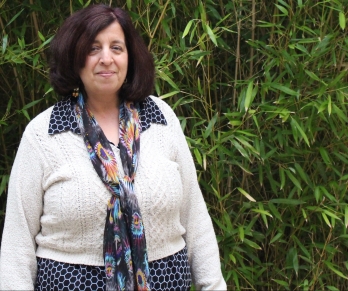
“I had my Brett in 91’ and my Bruce in 94’. I just loved being a mom and I always loved kids. The boys taught me things. I knew nothing about sports… I loved it [on campus] and I started bringing my boys here and bringing them to the sporting events, so that kind of began a tradition… Eventually, when I got a little older, I said, ‘You know what, I want to go to school’ and in 2009 I came back and started again… My son, Bruce, unfortunately tragically drowned in 2012 and he was 17, five days away from his 18th birthday. I thought about his personality, how he was. He was full of life. He was proud of me for being in college… I wanted to be a teacher, but eventually my path changed to social work and I graduated in 2015 with a bachelor’s degree in general studies…But, I have to work with students some kind of way. So that is just my path now, but I just love Youngstown so much. Youngstown has so much interesting history. We’re everywhere. Youngstown means home… I also think it means tenacity. We don’t give up easy.” – Rebecca Ann Banks, YSU grad student
An Opinion of YSU Journalism
When starting this report, I had a bit of an axe to grind with YSU’s Journalism department, and school in general. Although time has taught me that this is never a way to go into a story, I unfortunately still was quite bitter. Personally, I have not had a great history with school.
My high school experiences went between arguing with the teachers and never doing much with other people, and my early years in college have consisted of wandering aimlessly in a major I did not enjoy. Now I find myself in journalism at Youngstown State University, and I again find myself butting heads with many of those around me.
I spent the last few weeks interviewing other Journalism majors to try to find if anyone had similar opinions or to find out if there were other ways students try to improve their experience at YSU. Unfortunately, an issue started to appear fairly quickly. After a few interviews, I found that most students were answering the questions in nearly identical ways.
“The program exceeded my expectations so far and has made me more prepared in this point of my college career than I expected to be… My first experience was my imaging and design of news class with Dave [Davis] and I just really enjoyed being able to use a camera for my assignments and have open discussion in class about the things that actually interest me.” Alyssa Weston, Freshmen YSU journalism student said.
“I think it could be great if I can study journalism in the big city where there are big diverse communities,” said Nami Nagaoka, an international Journalism student “I love studying journalism at YSU. Since it has a diverse community, I have learned a lot of things as writing.”
Nagaoka is an interesting case as she seems to have the most effort put into her stay at YSU. Being from Japan, she not only had to upend her life and culture, but she is learning a new profession at the same time she learned more about the language it was taught in. I point this out because from the perspective of my interviews, Nagaoka is an outlier.
“I picked YSU because it is close to where I live so I wouldn’t have to pay extra to live on campus and the tuition is reasonable. I also heard that YSU has a pretty good journalism program,” Brianna Gleghorn, freshman journalism student, said.
Let’s take a step back for a moment, as something needs to be pointed out. The fact that YSU is, compared to any other major university, cheaper, came up in almost every interview conducted.
A point that didn’t come up very frequently, however, is a passion for reporting information, getting news to the general public or changing the industry in any meaningful way. Almost everyone interviewed loves it at YSU because it is cheap and close, but not necessarily because of the quality of the journalism program or due to any real passion for the program itself.
“I’ve been coming to YSU for different activities since elementary school so I was pretty used to campus by the time I started classes,” Gleghorn said.
“I just started this fall so I haven’t really gotten to be in the program for that long. So far the program, and the people in it, are great.”
“I joined the program because I was in the STEM program and couldn’t deal with math. I also like writing stories so I figure writing about true events could be just as neat,” Ian Frantz, a third year student at YSU, said.
Journalism at YSU is one of the few programs that do not require any upper division math courses, without making assumptions, this fact alone could cause some conversation.
“There is nothing I would change. I’m sure there could be improvements, but I can’t think of any major issues that need addressed,” Frantz said.
Even for the students who are further along in the program, they said that there are no major issues they want to be fixed, and nothing major they believe needs to change. In all of the interviews conducted, it was clear that the majority of people in the journalism program are fine with how things are handled.
An interesting anecdote, my mother has a master’s degree in journalism. Throughout my childhood, she told me that she chose that major for one reason: math was not a requirement.
While talking with so many of these students, I rarely got the impression that a passion for reporting information to the general public was something they had. That is not to say there are not students in the program who truly love reporting, it just seems there are a higher concentration of students just trying to get through their higher education experiences.
I started at YSU three years ago in the Computer Science and Information Systems Department. My original major consisted of math and programming and after my time with those classes, I learned that it is not for me.
During the time I spent with CSIS, I was writing on my own in a journalistic outlet I created myself, Valve News Network. For six years, I have run my own broadcast news venture on YouTube, and the experience has taught me a great deal. For one, it gave me the basic instruction needed in order to get information to the general public in a way anyone could understand, and two, it taught me that I truly love writing and reporting.
I had the idea to switch my major over early on in my college career. However, my barrier was my parents. Two years after I moved out, I finally made the switch.
Unfortunately, the experience I have had in this program is not what I expected, and this is where the root of my problem stems. It does not seem that anyone around me truly loves the idea of working incredibly hard on a story, giving it their all and taking a long time gathering sources.
It also does not seem that anyone is in this program due to the desire to get accurate and clearly stated information into as many brains as possible. It especially does not seem that any of the writers around me are here to be critiqued on anything they do, and are instead trying to get through with the bare minimum required for the degree we all need.
This is on top of the lustful obsession any writing program has with a “standard” for writing. MLA, AP, APA and Chicago are ‘biblical texts’ in school, and to those who wish to approach assignments creatively, this can be a fatal blow to morale.
I can’t tell you how heartbreaking it is to turn a paper into a the professor only to get it back with a grade of C or lower, not because the quality of reporting is poor, nor the word count or the visual counterparts, but because I forgot to spell out the numbers one through nine.
These are the problems I see with the program and if I were in charge, I would make an attempt to fix these issues. I feel that anyone who wishes to be truly invested in something should be capable of seeking out the flaws of that thing.
This is not the case for almost anyone I interviewed, and it gives me the impression that very few people choose this major due to a true interest, but to many other unrelated academic or personal reasons.
Tyler McVicker
I was born in a hospital, and from that point forward I have been alive. Eating nearly every day, I hope to finally find fulfillment in my life. I later found out I had a love for two things, Mario and Journalism. I spend my days in modern time playing Mario and doing Journalism. I am 20, and I hope to Games Journalist or Industry Marketer.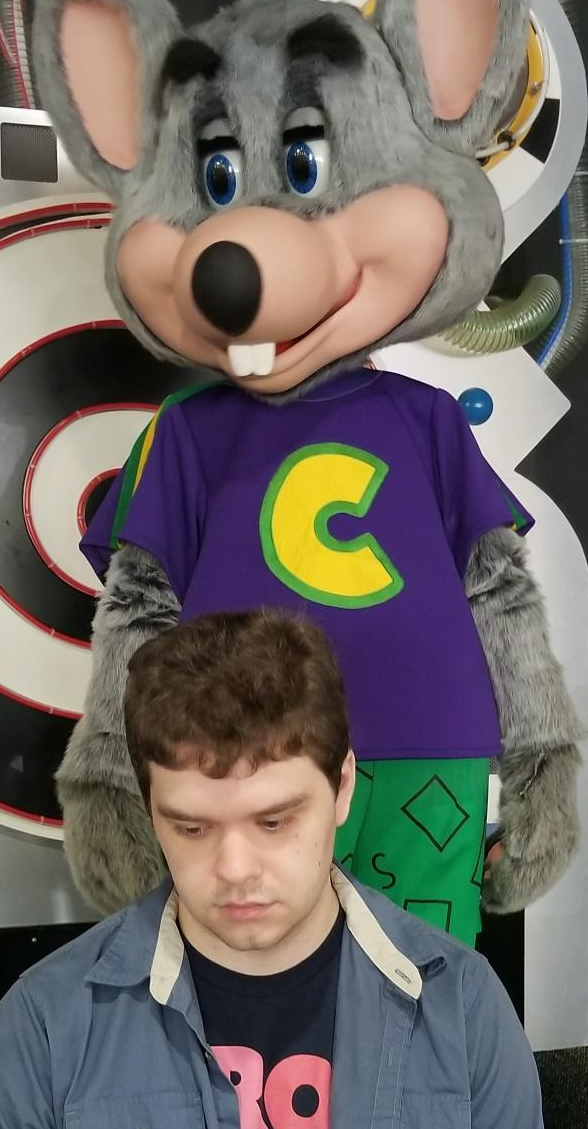
The Story Of Brittany Bissell
YOUNGSTOWN, Ohio: It’s a crisp, fall Friday night. Fans are in the stands covered in blankets, and you can hear the roar of school spirit among the crowd. The scoreboard buzzes with excitement as a football team takes the win. You rush home to turn on your television to 21 WFMJ to watch your football team’s highlights.
Upon the screen is a reporter who puts their heart and soul into each annunciation of a player’s name and an uncanny ability to describe a game to make it feel as if you were there watching it firsthand, unfold before your eyes.
What you don’t see is the people behind the scenes capturing all of the moments, while working under a tight deadline, to make sure everything is in order to the best of their abilities. These people try to give you, the viewer, the absolute best highlights.
Brittany Bissell grew up 50 minutes south of Youngstown in Wellsville, Ohio. Her small town graduating class had around 53 students walk across the stage with her to receive a diploma.
Bissell was always involved in extracurricular activities in grade school, and she participated in volleyball and cheerleading. In high school she took her talents to basketball and served as captain of the team. Not only did she play for her alma mater, but during her off season, she played AAU (Amateur Athletic Union) basketball for the Columbiana Ballers.
Bissell gives credit to her older brother for her love and passion for sports.
“I grew up with an older brother who played every sport under the sun pretty much,” Bissell said. “When you grow up with an older brother, it’s hard not to become a tomboy and follow all of his interests.”
In her earlier years, Bissell had a different ambition she wanted to embark on for her career. She said when she was younger, her dream job was to keep playing basketball her entire life. When she got to high school, she realized she wasn’t good enough to do so. This was when she decided to take a job working in sports.
“For me, seeing a woman like Erin Andrews on the sidelines gave me the hope that I could do a job like that too,” Bissell said.
After high school, with a goal in place, she enrolled at Youngstown State University. Bissell found a home in telecommunications after bouncing around between a couple of different majors to start college.
“I loved having the opportunity to work in the TV studio,” Bissell said, “and professors spent a lot of time outside of class, teaching me how to operate cameras and use the editing systems.”
During college, Bissell had the opportunity to intern in the sports department at 21 WFMJ-TV.
“I would say that turned out to be the best thing I’ve ever done,” Bissell said.
She interned in December of 2014 until June of 2015. After the internship, a sports multimedia journalist position opened up that following August. Sports director, Dana Balash contacted Bissel about the job. She auditioned and got the job one month later.
“I think this goes to show that you should take your internships seriously and learn as much as you can because you never know what they could lead to,” Bissell said.
Bissell not only has a dream multi journalist sports job, but it’s also a trailblazer. She is the first ever woman to be hired in sports at WFMJ.
“It means a lot to be the first woman ever hired in sports at WFMJ,” Bissell said. “It’s important to me to show the girls coming up after me that you can do anything you want.”
Bissell said we have come a long way with women in sports and she’s happy to be a part of that. For her, it’s a big accomplishment, but it has come with challenges. As many people know, there are still plenty of people who think women don’t belong in sports and have a lack of respect for women in sports.
Bissell said the job requires thick skin and for women to be over-prepared in a way they can minimize mistakes. She said people are always going to come down harder on a woman who makes a mistake.
Throughout her journey in the broadcasting industry, Bissell always has someone she looks up to. Her go-to person is Jeff Holenchick, a sports videographer at 21 WFMJ-TV, for many years.
“He taught me so much about this business during my internship, and my first year employed at WFMJ,” Bissell said. “He taught me everything from how to shoot and edit a package, and just helping me relax and be myself on camera.”
Bissell also looks up to women on ESPN and FOX Sports and tries to observe how they execute a great story.
When asked about what she would tell a younger person who wanted to go into sports or anything in journalism, Bissell said she would tell them to learn every aspect of the business from writing, shooting and editing.
“Don’t just learn how to be an on-air talent,” Bissell said. “Employers want you to be versatile and a ‘one-man band.”’
Bissell said this makes someone more valuable to them. She also said she would tell them to always be prepared.
“When you are prepared, you are confident, and when you are confident, it shows up in your work,” Bissell said.
Along with working at 21 WFMJ-TV, Bissell also currently works at CBS Radio – 93.7 The Fan in Pittsburgh. There, she covers the Pittsburgh Steelers, Pittsburgh Panthers and the Pittsburgh Penguins. Not only does she cover and attend the games, she interviews players and covers practices.
Along with WFMJ and CBS radio, Bissell had an internship in 2016 many people could only dream about. Brittany worked for the Cleveland Cavaliers during their Championship season in 2016. She was apart of the Cavs Crew, working on promotions and in game entertainment. She has a championship ring to go along with work experience with an NBA Champion team.
Here’s a quick recap of Bissell’s accomplishments: she is the first woman to work in the sports department at WFMJ-TV 21 in Youngstown, Ohio. She has covered everything from producing sports casts, anchoring, covering high school state championships, YSU sports, Indians games, Cavaliers and Pirates.
Not only is she a great worker, and has a plethora of experience in the field, but she is a trailblazer. Bissell is the perfect role model for any woman, and has started a path and opened a door for women for many years to come.
To see Bissell in action, watch the video below.
The Canadian Football League
By Alexa DeVore
This article focusing on the differences between Canadian and American Football leagues is a subsection of the main article, Are YSU Football Athletes in Danger?
Canadian football has different rules for the way they play the game. It is all up to how the Canada league decides to play their games.
Ray Rychleski, veteran college and professional coach, said the key differences are the width of the field. There are only 3 downs and in Canada the defensive line has to be a yard away from the ball when it is snapped. There are 12 players in the field in the CFL, while there are 11 in the NFL.
“In Canada there were probably less injuries then American, NFL, but in Canada half the team has to be Canadian,” Rychleski said.
In a team of 44, Ryschleski said half of that team will be 22 Canadians. Of those 22, none of the players could play division one in the states. In the NFL, those 53 that make up the team are big-time players. Whether they are division one or division two, they all are the best of the best.
“The speed of the game in the NFL is faster then the speed of the game in the Canadian Football League,” Ryschleski said. “To me, that is the difference.”
The collisions are harder and the speed is faster in the NFL, so there will be more injuries in the NFL then the CFL. However, these are all still division one and division two athletes, so Ryschleski said they are all just as good.
“The way the rules are set up, half the team has to be Canadian. You can have 40 Americans that want to be on the team that are better than everyone else but that does not happen. They have to be better then the Americans on the time,” he said.
“In Canada this is the rule, right or wrong.”
Diving in to the CFL, they recently decided to do away with full contact padding practices within the season, according to an article on CFL.com.
The reason for the change is to reduce the amount of injuries by giving the athletes more rest.
Brian Ramsey, Executive, Director of the Canadian Football League Players Association said, “Reducing full contact in practices while adding an additional week of rest to the schedule will be an immediate benefit to our members’ welfare and the game of football.”
Ryschleski said he is disappointed they think it is only football.
“Soccer uses their head. Have they done the studies they are doing in the NFL on soccer players? My discussion would be take normal men at their certain ages, test as many as you can that do some kind of hard labor job [and] do CTE on them when they pass away. Then compare that study with that they do in the NFL.”
Multiculturalism and The Muslim Community at YSU
By I’yonna Taylor-Smith
YOUNGSTOWN, Ohio: The Muslim community at Youngstown State University continues to rise every semester, along with the global negative effect of Islamophobia. Students at YSU, who practice Islam, are bridging the gap between Islam-practicing and non-Islamic practicing.
Every semester at YSU, there have been multiple forums for minority students and university community members to discuss the change they want to happen on campus. However, outside of professors and students who organized it, highly ranked faculty members usually do not attend.
At these forums, a multicultural center has been brought up many times by students regarding diversity and inclusion.
When asked about ever getting a multicultural center on campus, YSU President Jim Tressel said, “No one’s ever brought that to my attention.”
Tressel said if there were some examples of other colleges having successful multicultural centers, he would consider it.
However, before Tressel was the president of YSU, he was the Vice President for Strategic
Engagement at The University of Akron in 2013, which had a successful multicultural center.
In April of 2013, students attending The University of Akron had a plan to shut down their Office of Multicultural Development in the fall of 2013 and replace it with a Center for Student Success and Multicultural Center.
Around 75 to 100 students peacefully protested in hopes to stop considering the plan and keep the OMD. Tressel said they would seek more student input. However, they will continue to move forward in what [the Akron staff] believe is the right track.
Noor Khalayleh, a sophomore at YSU studying psychology, said she thinks the multicultural center would help the Muslim community.
“It’ll make us feel more welcomed and understood as a community that is negatively portrayed by the media,” Khalayleh said.
The Muslim Student Association (MSA) at YSU serves as a “community and interfaith service” and offers support to the university’s Muslims and non-Muslims through religious, community events.
According to the U.S. Census in 2016, 57 percent of Youngstown’s population identify as
religious and of those who identify as religious, 32 percent identify as Catholic.
Less than 5 percent of students at YSU are Muslim or practice Islam.
There are only two mosques in Youngstown and three rooms for students to pray on-campus: two in Jones Hall and one in Maag Library.
“Last year YSU made a parlayed room for people to use. My cousins, sisters, and I have used it plenty of times,” Khalayleh said.
Under Islamic beliefs, praying five times a day is a part of the five pillars; a set of guidelines considered mandatory for believers.
Some students have trouble scheduling classes while trying to meet their daily prayer quota, so they either schedule classes around their prayer time or they schedule their prayer time around their classes.
One of those students is Daniah Khalayleh, sister of Noor and a freshmen undergraduate student at YSU, studying Pre-Nursing.
She said she schedules her prayers around her classes and because she registered late, she had no choice but to take this option.
Because of the limited number of faculty members on campus who are Muslim, there is a limited number of adults who students can talk to. Of those, less that 1 percent faculty, one of them is Mustansir Mir.
Mir, the YSU Director of Islamic Studies, is a religious studies professor and a poet. He has written publications like Iqbal’s The Reconstruction of Religious Thought in
Islam and Commentary on Three Qur’anic Passages. Mir has taught at other colleges in Lahore, Pakistan and at U.S. higher education institutions such as University of Michigan.
Mir also provides a safe place students can talk if they feel discouraged about anything.
Daniah said finding other Muslim people on campus to fit in with was not an issue because she met other students during the summer, before the semester started, at the local mosque during Ramadan.
Tiffany Anderson, Director of Africana Studies, thinks making a multicultural center for everyone in the aspect of race, religion, sex and sexuality isn’t the right direction.
“It’s trying to fix a symptom and not the disease,” Anderson said. “From an administrative perspective, it’s not worth the cost when you think about the percentage of the university it would be servicing.”
Anderson said the women’s center will serve for about half or more than half of YSU’s
population, but the campus doesn’t help women in all the ways that are needed.
Anderson said specifically, for Muslims, beyond the administrative perspective of numbers, Islamophobia would be the largest obstacle these students might face. She said this will not be solved by a center and has nothing to do with Muslim students because xenophobic non-Muslim students create the problem.
According to the Council on American Islamic Relations (CAIR), islamophobia-related crimes increased in the United States by 65 percent between 2014 and 2016.
Daniah said she is not so concerned about safety on campus because everyone she has interacted with has been “so kind and friendly.”
She believes a multicultural center would help “create a better understanding of culture” because other cultures can relate and it would be better for campus to interact cordially. She also believes speeches about Islam on campus would help people understand Islam better and said these could also be Islamic programs and events.
William Blake, YSU Director of Student Diversity, agreed to fixing the root issue of YSU not being inclusive before moving on to other issues.
“I think we need to change the way we interact with out Muslim students,” Blake said. “I think we need to have more forums and more ways of exchanging our ideas on how we should act on interacting with individuals with other religions.”
Blake said people are so seeded with their own particular way on how the world operates they’re not welcoming to any other ideas. He said we really need to learn from the other students and become one.
John Stran
My name is John Stran and I’m a Journalism major at YSU. I am an Arts & Entertainment reporter for The Jambar. I’m also working on a minor in Sociology and Spanish.
Amelia Mack
Amelia Mack is a student at Youngstown State University studying advertising, public relations and journalism. Amelia loves to travel, read and write. She is passionate about her faith, good coffee and seeing new places. You can occasionally find her writing for student publications and consistently oversharing on Instagram.
The Tressel Perspective
By Amelia Mack
YOUNGSTOWN,Ohio: Just before I was accepted into Youngstown State University as an incoming freshman, it was announced that Jim Tressel was returning to Youngstown to be the new university president. The excitement throughout the city was tangible. Slowly over the last three and a half years I have seen the perception of our university change and improve.
I had the opportunity to sit down with now Youngstown State University President Tressel in his Tod Hall office. His genuineness is the first thing I have noticed about him in every interaction I’ve had with him. At orientation my freshman year, I watched him make small talk with my dad and ask about his job. Today as I met him for this interview, he spent five minutes asking me questions. You can tell he is interested in what brings people to the university and what kind of experience they are having.
Tressel has seemed to me like a hometown hero. His name five years ago was synonymous with football and championships. Today he is coaching a much bigger team and tackling issues on a much bigger scale as he leads our university community. The perspective of the city of Youngstown and its university have changed immensely since his arrival in 2014.
Timing
When Tressel first arrived in Youngstown in 1986, it was nine years after the steel mills had left the city.
“It was just like when you lose someone and there is a period of mourning and denial. In ’86, [the residents of Youngstown] were still kind of in denial,” Tressel said.
I kept thinking, ‘I think these people are better than they think they are, they just don’t think much of themselves.’”
Tressel said he always thought a lot of the people of Youngstown, though, and by 2014, he knew the timing was right to return.
“Timing is important with everything,” Tressel said. “The attitude had kind of fallen off a little bit but there was an interest and a belief [that the city was improving.]”
“My perspective coming back the second time was ‘Gosh, there’s so many good things going on.’”
The first assessment he made was that the university and the city needed a few upgrades.
“There’s something important about feeling good about where you are,” Tressel said.
This led to the construction work on Lincoln Avenue and Wick Avenue. Although construction on Lincoln Avenue continues, Wick Avenue officially reopened on Oct. 17, with Tressel front and center at the ribbon-cutting ceremony.
Tressel knew that if the area was spruced up, it would only draw more people and businesses into the city and boost the local economy.
“I think all of the innovation going on in the city right now with the Youngstown Business Incubator, America Makes and the Innovation Center is exciting,” Tressel said.
“The timing is good right now, but we may not continue at this trajectory. Just because we’re progressing doesn’t mean we’re set, but that’s the fun of it. There are so many neat things happening here and we have to make sure our excellence is known,”
All of these changes have allowed YSU to recruit further away from the city, he said.
“Our freshman classes typically were 75 percent from five counties,” Tressel said.
“Now we’ve got that down to about 68 percent from five counties and that’s a lot more people from elsewhere, which brings in more people.”
Perspective
Talking with Tressel about the university’s plans for the years ahead, he has a way of being involved that I think is unique to him. For example, he was able to tell me specific numbers of incoming freshman from local high schools.
When I asked him what he thought were some of the most exciting things that have happened since he became president at YSU, I thought he would mention making it to the football championship last year or even last year’s’ great graduation numbers.
Instead, he mentioned successes from YSU’s math teams, a girl in the equestrian club and two male students who just won big in the university’s bass fishing club. For Tressel, both the little wins and the big ones are what make the university an exciting place to be.
“It was almost like people didn’t think those things could happen here, but yes they can!” Tressel said. “We just have to earn it and do the work.”
When I asked about his greatest challenges, he brought it back to perception.
“It always seems to be getting people to believe that we can,” Tressel said. “Helping people understand that there is a lot more here than you’d even like to believe.”
“The hardest thing is for someone to walk in and say, ‘You know what? I can be and do and experience and live out and realize my dreams from here just as well as I can from anywhere in the world and that’s the attitude I’m going to take,’” Tressel said.
Tressel is aware that it isn’t going to be easy to change the perspective overnight.
“It’s not going to be perfect and I know there are going to be things I’d like to get better, and I’m not going to be afraid to say where I think things could get better,” Tressel said.
“I’m going to have faith that the people that I engage with will say ‘You know what, we never looked at that, we will make that better and that’s a process that takes a while but it’s part of shaping the perception of how good we can be.”
He said that YSU will continue to do what it does best, but he’s excited to see what comes next.
“Now that there is a stronger feeling of our potential, I’m anxious to see what that potential realizes,” Tressel said.
“It won’t be without hardships and realities but it’s going to be fun to watch.”
Coming Home
Youngstown holds many memories for Tressel, including highs and lows. When he came back to interview for the position of university president in 2014, it was the first time he had been able to drive around and see the city in 12 years.
He drove through downtown and couldn’t believe the number of businesses that had moved in. He was amazed to see that he could even drive down Federal Street. When he was working here as football coach, everything was boarded up and one couldn’t drive through downtown.
He ended up parked outside of MVR right before his interview. Carmine Cassese was the third-generation owner of the MVR, the former YSU football equipment manager, and Tressel’s dear friend.
“The MVR was kind of my campus home away from home when I was coaching here,” Tressel said. “I was either in the stadium or in MVR to have a quick sandwich,”
Cassese died in 2013 of pancreatic cancer.
“It was kind of a personal thing to drive down and think about Carmine … and reminisce in my mind about 15 years’ worth of chicken sandwiches and pasta,” Tressel said. “How much people have put into this and the things they’ve had to endure. Great success and with that, tough times.”
“We lost Carmen, which was a big deal for this community. That made it like home. I was gone for 12 years, that’s a long time, but it brought it all back,” Tressel said.
“My kids grew up here. This was home to them. [Sitting outside MVR] was the moment I thought there’s no place like home.”
How has Tressel changed the perception of Youngstown?
“I think him being here as president has brought a positive reputation to YSU. He’s invested in the school and truly cares about the students there… He makes time for those who speak to him.” – Renee Christy, YSU Alumni
“He has given YSU a ton of national exposure, highlighting the strengths of the university. He is much more approachable and in turn, I think has generated more donations for the university.” – Brenda Farone, Mahoning Valley Resident
“After having a long time where living in Youngstown has been perceived as a negative thing, he has brought a positive environment to not only the university, but the community as well. Ever since I started on my university tours, I have noticed the positivity he brings to the university… I’ve never heard of a college president who cares about his students and the community as much as he does.” Zack Digman, YSU student
“From my experience, he’s been the biggest supporter, salesman and promoter of STEM here at YSU. He’s also one of the nicest people I’ve ever met. Some STEM students and I got to have dinner at his house with him and some congressmen and women. We were able to sit and talk with him about his vision for the future of YSU and what it meant to him. He’s the man.” – Alex Fitzgerald, YSU STEM student
Are YSU Football Athletes in Danger?
By Alexa DeVore
YOUNGSTOWN, Ohio: The National Football League was caught under fire and put to blame after a recent autopsy sought out how deceased New England Patriot, Aaron Hernandez, suffered from a severe form of Chronic Traumatic Encephalopathy.
During the mince of committing suicide, Hernandez was in the trial process for conviction of murder of a friend. According to the New York Times, his autopsy revealed, “he had such a severe form of the degenerative brain disease C.T.E. that the damage was akin to that of players well into their 60s.”
Now parents from all over are asking: could this happen to my child?
CTE is constant, instant and persistent blows to the head from collisions or strong impact, the concussion foundation said.
A study done by Ann McKee, director of Boston University’s CTE Center, on 111 former athletes brains showed 110 of them were found to have CTE.
The study started sparking concern in the parents of adolescents on the dangers associated with children playing football.
The NFL is being sued for former athletes being diagnosed with CTE after autopsies confirmed CTE was the cause of death.
Equipment Manager of Youngstown State University, Alvy Armstrong, seems to think the increase of CTE has to do with the ill-fitting helmets.
“I have had parents bring their kids in here from high school teams, peewee teams, and the helmets they would get, I wouldn’t put that on,” Armstrong said.
Armstrong said high school helmets are not reconditioned each year like college football helmets. He said if they are not conditioned, the helmets may not be keeping these athletes safe in the lower leagues.
“I formed the opinion that when I played football in eighth grade, I learned that concussions take more time to clear the younger you are. The older you are, it clears more quickly,” YSU president and former football coach Jim Tressel said.
Armstrong said when he is fitting a player for helmets, he worries solely on the fit whereas the players worry about the look of the helmet.
The newest helmets used by YSU football players, other colleges and in the NFL this year are called VICIS Zero1. The company’s mission is to, “Protect the athlete, elevate the game.”
A VICIS helmet includes a soft outer shell to defuse collisions from multiple directions. The company also mentions the helmet evaluates performance with the widest field of peripheral view.
For further information on these helmets, watch the video courtesy of VICIS.
The helmet is used to reduce the impact of the force from a hit. YSU athletics is using this helmet because they were given three to try. With the cost running into the thousands, athletics cannot afford to buy all 100 athletes these helmets.
The VICIS helmet cost about $1,200 each. Although the helmet was designed for elite athletes, and players it is recommended for are those weighing 150 pounds or above.
Because of the cost, most high school athletes will not be able to afford them either.
Tressel said football is not the only sport affected by concussions, but with recent findings within the NFL, football is in the spotlight collecting blame.
Tressel compared playing sports frequently to riding a bike; if a person does it enough times, there is a bigger chance of getting a concussion.
“I also formed the opinion as I was coaching that I was not really for the extended seasons,” Tressel said.
When Tressel was first in college, he had a nine-game season, but the number of games per season kept increasing. Tressel said the same applies with high school.
“As history went on, they had play offs, then they had more teams in the play off,” Tressel said. “So there were more teams playing more games.”
Tressel said the topic needs to be brought around the frequency of games and practices.
“When people ask me for my opinion on the concussions, I think it is more of a frequency discussion,” Tressel said.
If collegiate, high school and professional football corporations cannot cut the frequency of games, the amount of hitting practices and padded practices can be cut also. Tressel said this still involves hitting practice.
“There’s been a lot of movement [in cutting the amount of practices],” Tressel said. “There was [a cut on] how many practices you were allowed to have, but unfortunately if you are in a non-padded practice, you still run into each other.”
Tressel said these are really good discussions to talk about with the frequency of practice and the amount of games, but he does not think this is as impactful of a discussion as the length of the season.
One other thing to look at is size and speed of athletes with how the game is played.
“Mass times acceleration equals force and force is what causes concussions,” Tressel said.
Now, athletes are bigger and faster but are playing on the same size field with the same number of people.
“I went to a CFL game, Canadian Football, I’ve never been to one, it was a playoff game,” Tressel said. “I was talking to the coaches and there were a couple guys that coached American football and I asked, ‘what’s the biggest difference?”
In Canada, they have 12 people on the field and it is a much bigger field. The rules are different; they have 3 downs instead of 4 downs.
“The guy I was talking to said the biggest difference I see if there is not injury time outs because no one gets hurt,” Tressel said.
John Linkosky, a former YSU football player, had to stop playing due to many concussions.
“[I had] two concussions at YSU and five overall,” Linkosky said. “They were bad enough where I couldn’t look into lights, listen to music or think straight because of the headaches.”
Linkosky said it was terrible to stop playing football because it was like his life was taken away.
“We need to get as much information as possible about CTE and figure out ways to prevent it,” Linkosky said. “Your head is the only part of your body you can’t get surgery to fix.”
Billy Price, former Youngstown resident and center for The Ohio State Buckeyes, said CTE is something that he is very concerned about while in competition.
“I’ve only had one concussion in my career, it was my sophomore year at Austintown Fitch. I only missed one scrimmage during August [that year] because of my concussion,” Price said.
Because CTE is a huge concern to Price, he makes sure his equipment is a proper fit for performance.
“I make sure I have a mouth piece that fits properly and my helmet does not move on my head throughout competition. If my equipment does not fit properly, I make sure it is corrected and that there is no doubt when I step on the field,” Price said.
Football may not be the only concern for players or family members that are athletes.
“Football is not the only sport that needs to be viewed for potential effects of CTE. Soccer is another sport that creates a lot of head contact. My brother plays soccer at Austintown Fitch and making sure his head health is at an all-time high is one of the priorities that the medical staff at Fitch focuses on,” Price said.
Tressel and Armstrong would like to see a study done on all sports that have contact like soccer, rugby, even women’s sports.
By some studies on a specific sport should not be determining if children do these things or not. It’s living life and athletes take away many benefits from playing sports and getting involved when they are younger to now.
To read more about CTE in the NFL and the Canadian Football League click here.

